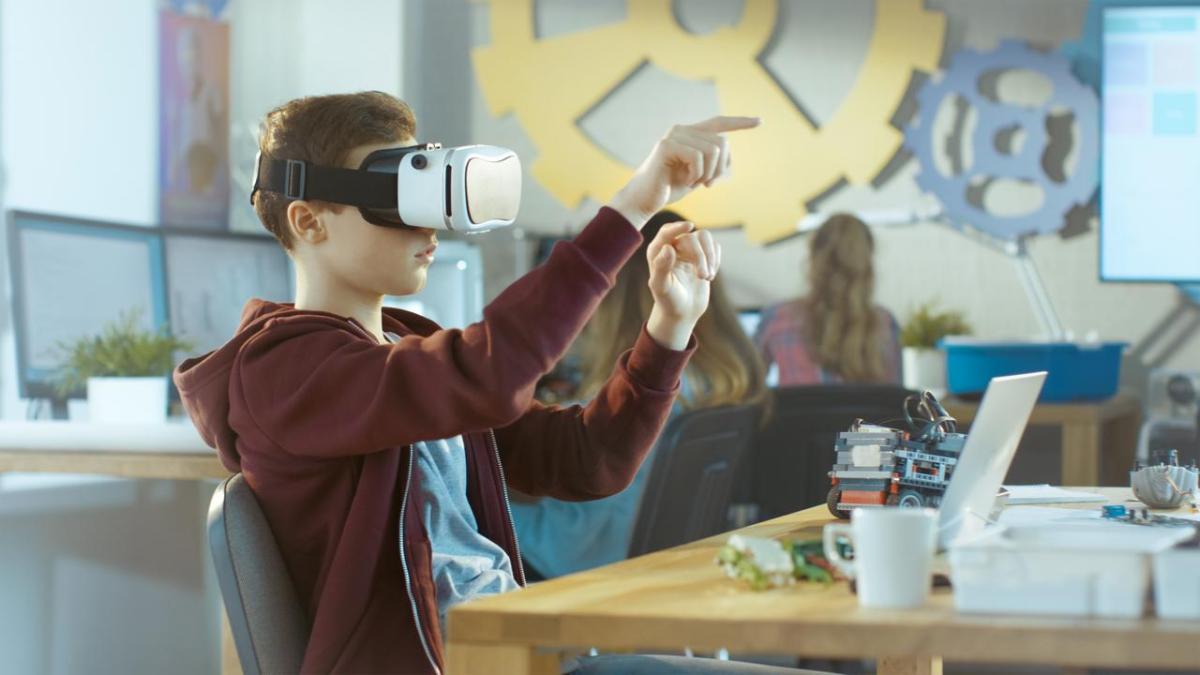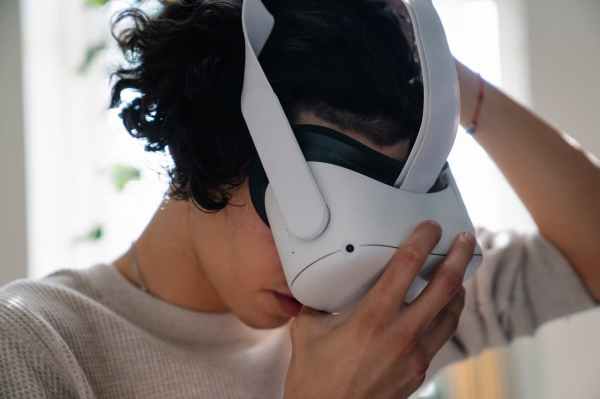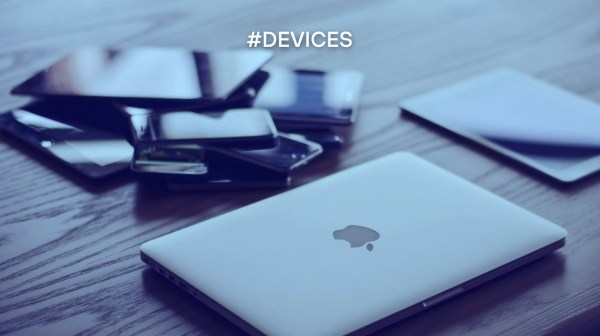Traditional education based on reading or memorisation of facts is giving way to new educational strategies. A growing body of research indicates that access to a large amount of information does not equate to effective learning. As a result, many educational environments are already committed to cognitive experiences that improve students’ concentration and retention.
Being truly immersed in learning, with all senses focused, triggers maximum motivation in learners for knowledge. In this sense, Virtual Reality in the classroom has become an educational tool with great potential, and is capable of generating new knowledge environments without losing the practicality and amenity of the experience.
What is Virtual Reality?
Virtual Reality is an immersive technology used to design a simulated environment, an experience that is intended to resemble the sensations, appearances and characteristics of the physical world. Typically, these immersive reality creation systems make use of special, purpose-built devices or multi-project environments in order to generate more realistic images, sounds and other sensations.
It is an experience that can be unique, and not to be confused with any other. This is due to its main characteristics:
It is a virtual world composed of visual elements through graphics that include precise environmental sounds and the characteristics of the environment to generate an immersive experience. In addition, there is sensory feedback produced by the position of the user, who must interact with the environment to feel the reality.
Different uses of Virtual Reality in the classroom
This technology can be present at any level of education, be it primary, secondary, university courses, from the youngest courses to adult education, in different environments and with different approaches.
- Travelling to other environments and historical moments: with the help of virtual spaces, ancient civilisations can be recreated. In this way, pupils can discover at first hand what Ancient Greece or the Roman Empire was like. However, it is not just a matter of generating curiosity, as a visit to a museum might be, but of going beyond that. For example, PhD students in archaeology can investigate in detail the transformation of geographical features.
- A new way to understand history. Not only can you see archaeological sites or extinct civilisations, but you can also understand a new perspective on history. Educational immersive multimedia can serve to open up new debates in the classroom on transcendental historical moments, such as the conquest of America.
- Exploration in different dimensions. Analysing the human body in detail, galaxies or molecules. Immersive reality is a crucial tool for discovering how many elements work. Students of nursing, optics or medicine can have a closer relationship with the knowledge. It can also be of great help in other sectors, e.g. analysing the operation of engines for the aeronautical and automotive sectors.
- Improving empathy and consideration. Virtual reality can be a reflection of current social issues, thus strengthening ethics. Aspects such as knowing the realities experienced by people affected by war, the plight of refugees or certain physical and psychological problems.
Benefits of virtual reality in education
Immersion is one of the most important features offered by this technological system, i.e. the possibility to participate directly in the circumstances or knowledge. In addition to this, educational digital resource developers, publishers and educational organisations that have explored the potential of VR as a learning resource have highlighted the following benefits:
- Enhancing creativity. Irrespective of its level of development and knowledge, VR is able to stimulate learners’ creativity. It allows a more visual and comprehensive knowledge to be displayed, so that students can better understand the subject studied. Learners form a clear, quick and effective mental picture of knowledge.
- Offering complex knowledge. This technology makes it possible to develop recreations of complex knowledge. Everything is dealt with more comprehensively and helps to bring together different aspects in one picture, which undoubtedly allows for a more complete understanding of educational subjects. It can also be a means to practice safely and effectively, for example, driving or surgeries. With the implementation of virtual spaces, subjects can become more attractive to students.
- Helping to build capacity and improve coexistence. Virtual Reality is able to adapt to learners with special needs, thus breaking down various educational barriers. The experiences in this virtual space are based on an adaptive learning model, thus allowing children to progress at their own pace. In addition, this tool has key metrics to monitor the level of difficulty and the student’s progress, taking into account the objectives set by the centre or the teachers. It also promotes collaboration between all the pupils involved, thus improving the process of school coexistence.









